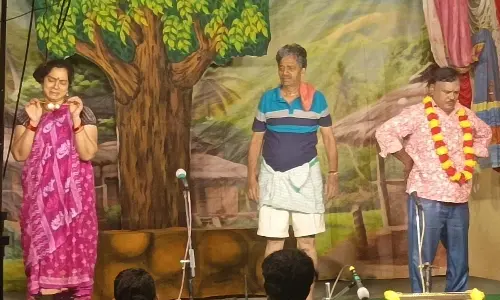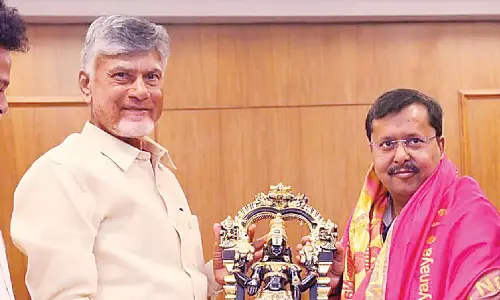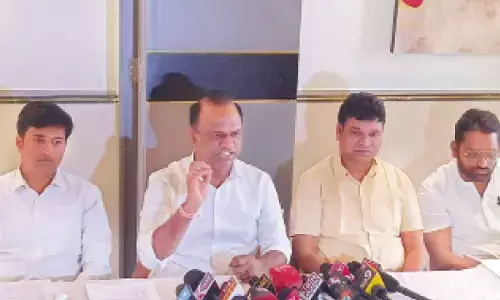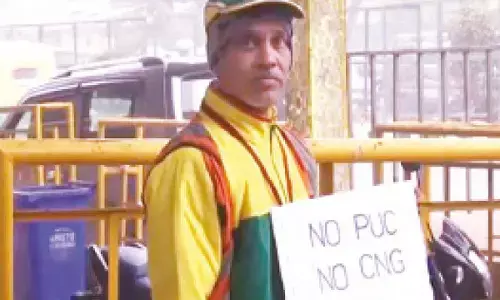Lung power on the floor

As an opposition member, Jaganmohan Reddy was within his rights to move an adjournment motion. Given his limited bench strength
As an opposition member, Jaganmohan Reddy was within his rights to move an adjournment motion. Given his limited bench strength, he might not be unaware of the fate that awaited his motion if it was admitted and voted after a debate… By the simple stratagem, which is provided in the rule book, his motion could have been put to vote at the admission stage. Since the treasury benches have numbers on their side, they could have carried the day with effortless ease and thus made YSRCP members do no more than squirm in their seats. Unfortunately, this was not the case; the House saw an otherwise avoidable adjournment
From Bihar to Andhra Pradesh, it is the same story. Assembly meets, the opposition demands suspension of question hour or tables an adjournment motion, the Speaker refuses, and the House plunges into pandemonium only to be adjourned after an hour; the wire services which live by the minute, if not the second, dutifully report that nothing was heard in the din and what could be heard had been expunged. This was the scene in the Andhra Pradesh Assembly on Thursday morning before the Chief Minister got up to announce at the appointed auspicious hour his government’s decision on the new capital.
Whether Jaganmohan Reddy, the Opposition leader, wanted to convert the legislature floor into a Lotus Pond as someone alleged during the debate is not germane to our discussion. As an opposition member, he was within his rights to move an adjournment motion. Given his limited bench strength, he might not be unaware of the fate that awaited his motion if it was admitted and voted after a debate. Yet, he wanted to score a political point and got away. By the simple stratagem, which is provided in the rule book, his motion could have been put to vote at the admission stage. Since the treasury benches have numbers on their side, they could have carried the day with effortless ease and thus made YSRCP members do no more than squirm in their seats. Unfortunately, this was not the case; the House saw an otherwise avoidable adjournment.
Chandrababu Naidu is not alone in consulting the in-house astrologers for proper time to take crucial political decisions. But no CM or PM before him had let the world know in the way he did that he was holding back his or her step till the Peter Vidals of the day gave the green signal. For that credit must go to Jawaharlal Nehru who had used every occasion from a marriage to the inauguration of a hydro-electric project to drive home the need for scientific temper.
This digression apart, the question that should bother everyone interested in parliamentary democracy is why the treasury benches routinely stall the opposition demand for either suspension of question hour or an adjournment motion. All most all parties are guilty of turning the House into a chamber for lung power, and some to the display (spray?) of pepper powder.
For lay observers, the impression is that a large percentage of our law-makers are incapable of advancing a reasonable argument in order to be heard with respect, if not awe. This is rather unfortunate. Having covered four state legislatures and both Houses of Parliament for over four decades, I can say one thing without fear of contradiction, more so as I had the privilege of helping some new MPs shape up as good debaters. It is that most law-makers, if not all, come fully prepared particularly for the Question Hour. This is why we see a full House in the first hour.
Unfortunately, all the listed questions are not taken up, and even the four-four five questions that are allowed don’t give an opportunity for the backbenchers to field their supplementaries. In some assemblies I covered, there used to be a practice of limiting the number of supplementaries in order to finish all the listed questions for the day.
Shiv Raj Patil, as Speaker of Lok Sabha, used to speak about the need to take up more questions every day but during his term this remained a pipe dream. Before him and after him as well! His stewardship of Lok Sabha saw the Opposition’s clamour for the suspension of question hour go up by a few decibel levels.
These days this demand has become a regular weapon in the opposition armour. What concerns us is the pandemonium that the demand invites? And the brief adjournment it results in. The floor of a legislature is a forum for debate with or without a walkout. The likes of Rabi Ray used to adopt an interesting stratagem. It is not putting the opposition demand to vote, in which case it will go out for a toss, but allowing the champions of the demand to take the floor. It was an invitation for an impromptu discussion because every party would like to put its stamp on the debate. Result: the allotted one hour for QH was exhausted and the House moved over to the Zero Hour which follows the QH.
I find it difficult to refrain from the remark that trouble started with the tendency of the Chair to doggedly insist that the House must proceed ahead with the QH. Since this plea often finds no takers, the House stands adjourned for a while. Such adjournments were resorted to in the past to let tempers cool. Now these have become a routine.
Jaswant Singh, the BJP leader, used to cajole members to speak, whenever he was in the Chair. Quite a contrast to his was the style of Balram Jakhar. He used to allow the shouting brigade to have their way and yet always ensured that debates took place that used to bring out the best from both sides of the political divide.
This quick recap of the past in the context of the present is to say the obvious: there are ways and means to let parliament and assemblies to function normally. Adherence to the rule book should not be seen as an assured way for parliamentary nirvana.



















